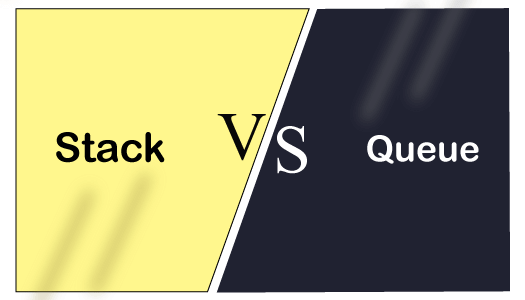
You can implement Queues using Arrays or Linked Lists. Since it is based on the FIFO principle, we need to remove the element that was inserted first.įront: Similar to the peek operation in stacks, it returns the value of the element at the front without removing it. A new element is inserted at the back of the queue, similar to how a person enters a queue at a ticket counter.ĭequeue: Dequeue means removing an element from the queue. OperationsĮnqueue: Enqueue means inserting an element in the queue. It is based on FIFO (First In First Out) principle. Stacks are also used during function calls, converting an Infix to Postfix, during Depth First Search (DFS) and many more instances.Ī queue is a linear (non-primitive) data structure in which elements are inserted at the rear of the list and deletion at the front of the list. It is mostly used in solving problems that involve recursion. You can implement Stacks by using Arrays or Linked Lists. This operation basically returns the boolean value True when the size is zero. To prevent performing operations on an empty stack, you are required to allocate the size of the stack that will be updated during push and pop operations. IsEmpty(): Used to check if a stack is empty or not. Peek(): Allows the user to see the element on the top of the stack. For example, think of a stack of plates in a restaurant. Stacks are based on the LIFO (Last In First Out) principle, which states that the element inserted at the last is the first element to come out. This pointer allows us to keep track of the last element present in the stack.

However, If you just care about the total amount of time, then use resizing array, because although it may be slower when there are resizing operations, but the total time will be less, because individual operations are fast.A stack is a linear (non-primitive) data structure in which elements are inserted and deleted only from one side known as the top. The bottom line is, If you want to ensure that every operation will take a constant time, then use linked list. Resized Arrays →Every operation takes O(1) amortized time, and less space needed. But it uses extra time and space to deal with object creation and links. Linked List →It guarantees that every operation will take constant time in the worst case. I’m not going to include the array with fixed size in the comparison, as already mentioned that it violates the idea for both stacks and queues. Trade-offs: Linked List Vs Resizing Array In addition to an integer N, and two integers head and tail (only in case of queue).
#Stack vs queue plus#
Memory →The memory usage is for the reference to an array, plus the array overhead, plus the memory needed to store the values. The amortized time as result of inserting N items(N=8) in a resizing array with initial size of 1 = (1+2+4+1+8+1+1+1) / 8 ~= 2. The average case takes a constant time for inserting (at the end) and deleting the last element.Īmortized time is the average time for sequence of operations in the worst case, and it’s not the same as average time.

The amortized case and best case is O(1) for both operations. Time →The worst case is O(N) for inserting and deleting, because we may need to resize the array. A stack implemented using fixed size array - algs4.cs. // Push an item to the end of the array public void push(String item) Resizing Array Analysis


 0 kommentar(er)
0 kommentar(er)
